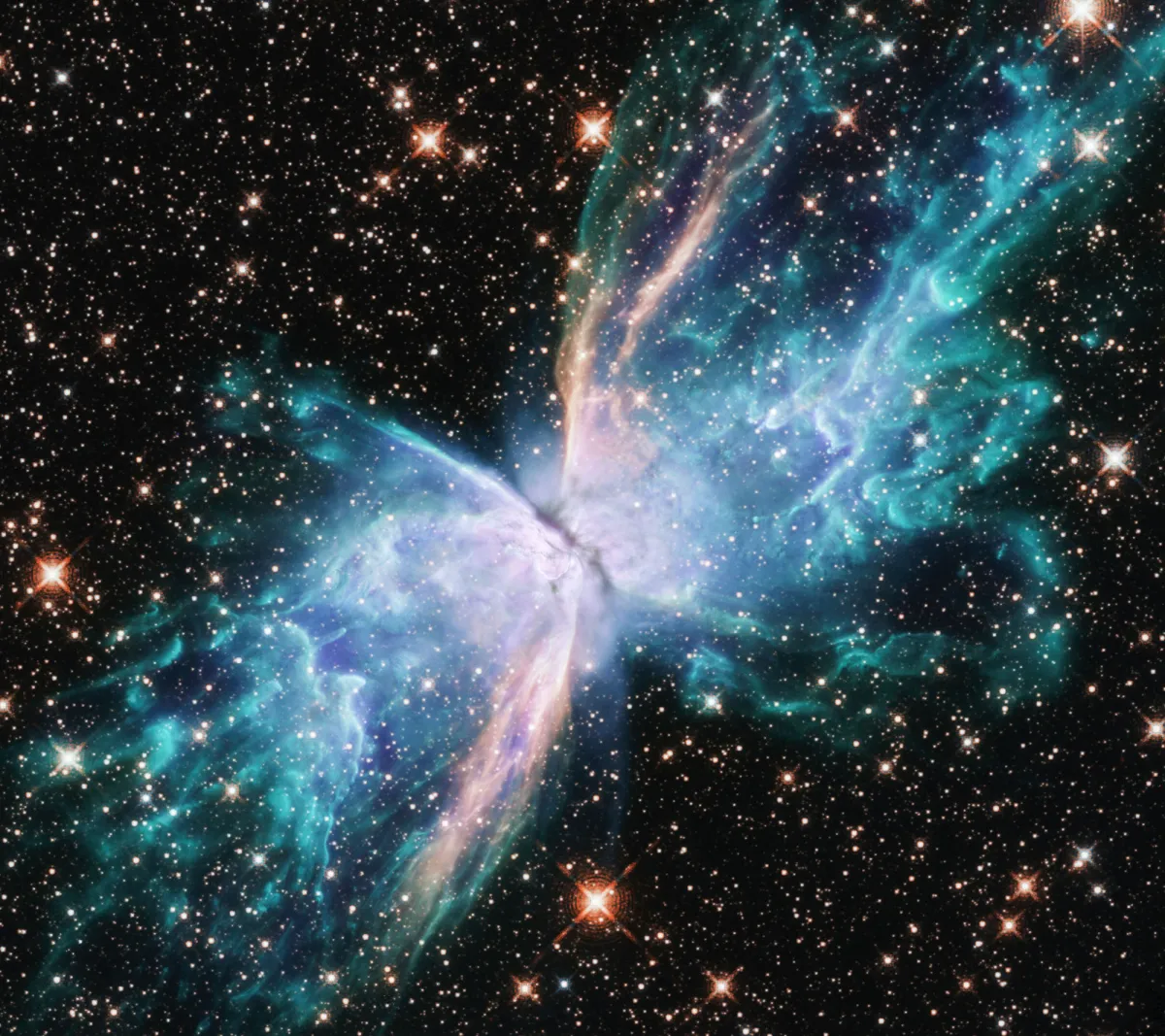Bug Nebula (NGC 6302)

History
The nebula was discovered in 1880 by Edward Barnard with his private 5 inch refractor at Nashville. He suggested the name «Bug Nebula». [196]
While searching the photo plates of the «Palomar Observatory Sky Survey» for H-II regions, the American astronomer Stewart Sharpless came across the this nebula and listed it as Sh 1-3 and Sh 2-6 in his catalogues published in 1953 and 1959. [309, 310] Colin S. Gum listed the nebula in 1955 as Gum 60 and noted that it is «a doubtful planetary» by Vorontsov-Velyaminov in 1934 «but the form of the objects suggests a diffuse nebula.» [555]
Modern high-resolution images show that the nebula more looks like a butterfly why it is also sometimes called «Butterfly Nebula», a name that also used for the planetary nebulae NGC 2346 or m2-9.
Physical Properties
The planetary nebula NGC 6302 lies roughly 3800 light-years away. The age of the nebula is estimated over about 2200 years. It stretches for more than 2 light-years.
The central star is hidden within a doughnut-shaped ring of dust, which appears as a dark band pinching the nebula in the centre. The thick dust belt constricts the star’s outflow, creating the classic bipolar or hourglass shape displayed by some planetary nebulae.
The star’s surface temperature is estimated to be about 222'000 Kelvin. Spectroscopic observations showed that the gas is roughly 20'000 Kelvin, which is unusually hot compared to a typical planetary nebulae.
The nebula's outer edges are largely due to light emitted by nitrogen. The inner regions are areas where light is emitted by sulfur. These are regions where fast-moving gas overtakes and collides with slow-moving gas that left the star at an earlier time, producing shock waves in the gas. [522]
| Designations | PN G349.5+01.0: NGC 6302, PK 349+01.1, ARO 502, ESO 392-05, Gum 60, He 2- 204, RCW 124, Sa 2- 180, Sh 1- 3, Sh 2- 6, VV 94, VV' 168, Wray 16- 259 |
| Right Ascension (J2000.0) | 17h 13m 44s |
| Declination (J2000.0) | -37° 06' 06" |
| Dimensions | 44.5" (optical), 10." (radio) |
| Radial Velocity | -39.0 ± 2.1 km/s |
| Expansion Velocity | 8.0 (O-III) km/s |
| C-Star Designations | AG82 233, CD -36 11341, CPC 18 8579, GCRV 9926, HD 155520 |
| C-Star Magnitude | B: >21.1 |
| Discoverer | FLEMING 1896 |
Finder Chart
The planetary nebula NGC 6302 is located near scorpio's sting in the constellation Scorpius. The best time to observe it is in the short summer nights from February to November, when the part of the constellation is highest above the southern horizon at night. On 11 June it in opposition with the Sun. An observation site with a clear view to the south is required here, because the nebula, with a declination of -37° in Switzerland, comes barely 10° above the horizon when it is in the meridian. Preferably, everyone in Milan should then switch off the lights.
Visual Observation
500 mm Aperture: In the 27 mm Tele Vue Panoptic (87x), NGC 6302 is already quite noticeable as a bright streak with a star in the centre. At higher magnification (9 mm Tele Vue Nagler, 263x), two curved extensions become visible, resembling the spiral arms of a galaxy. — 20" f/4.7 Ursus Dobson, Astrofarm Tivoli, Namibia, 11. 9. 2023, Bernd Nies
